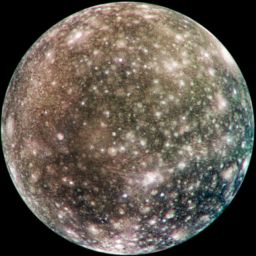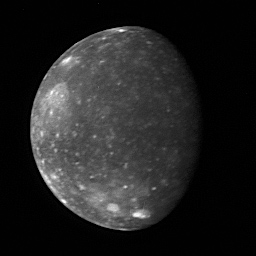Emily Lakdawalla • Dec 17, 2007
New views from Galileo
Amateur image magician Ted Stryk has just provided me with a glorious set of global views of Jupiter's satellites, which he has produced from the Galileo data set. Galileo gave us our best views of these worlds but the data set has a variety of problems, most of which are rooted in the failure of the high-gain antenna. There are lots of data dropouts, for one thing -- places where there should be image data, but where there are only black pixels. Also, the Galileo imaging team was forced to compress their images onboard the spacecraft before transmitting them to Earth much more than they would have liked; compression introduces ugly artifacts in images, resulting in loss of detail. And they had to be very choosy about which filters they used for imaging -- so it is very rare to have the data necessary to make a view that looks like what human eyes would see. Ted has put a lot of effort into this data set, developing tricks to work around some of these problems, and produced images that look like they came from a different spacecraft. I'm slowly adding them to our image database, so I'll post a few here at a time.
Before I post these images I want to mention that in my enthusiasm for Ted's work I wish in no way to impugn the work done by the original Galileo imaging team. Ted's work is as much art as science, a labor of love that the actual science teams not only don't have time to do but also wouldn't want to do, because to make the images look this good Ted had to fill in gaps here and there, reducing the value of these images for science purposes but adding to their illustrative power.Callisto is an often-neglected satellite of Jupiter, usually regarded as the least interesting of the Galilean satellites because its surface is so very ancient. Here are two very pretty, subtly colored views that Ted managed to produce from the Galileo data. The first is the canonical view of Callisto:
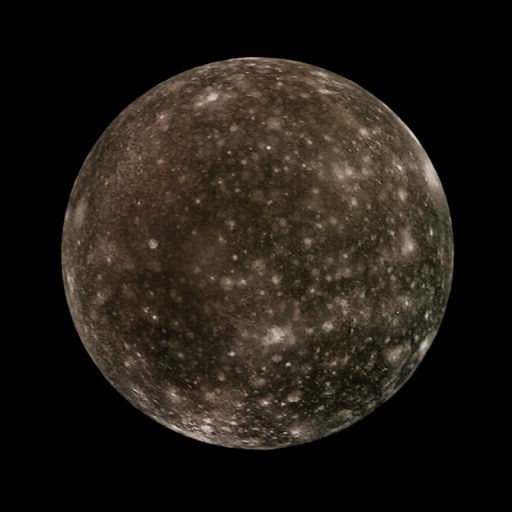
NASA / JPL / Ted Stryk
Callisto in color
Galileo captured this global view of Callisto on its 30th orbit of Jupiter, on May 26, 2001. The filters used for this image cover a broader range of the spectrum than human eyes can see. Galileo ranged from 740,000 to 744,000 kilometers from Callisto when it took this image, at a phase angle of just 3°. Image scale is 7.5 kilometers per pixel.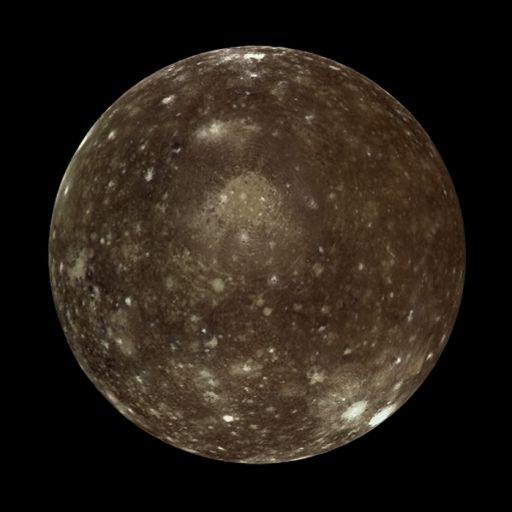
NASA / JPL / Ted Stryk
Callisto in color
Galileo captured this global view of Callisto on its 11th orbit of Jupiter, on November 5, 1997. The filters used for this image cover a broader range of the spectrum than human eyes can see. Galileo was 687,000 kilometers from Callisto when it took this image, at a phase angle of just 1°. Image scale is 6.9 kilometers per pixel.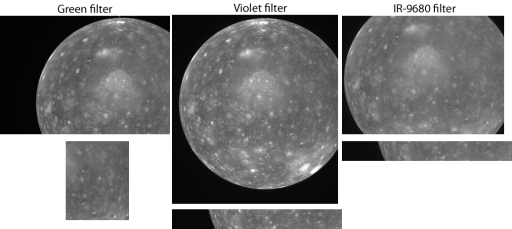
NASA / JPL
Data from Galileo's E11 global observation of Callisto
These six images represent the data set obtained by Galileo during its November 5, 1997 flyby of Callisto. The images were reduced in size by 50% (by binning 4 pixels into 1) before being returned to Earth, and none of them covers the entire disk of Callisto. Ted Stryk managed to produce this global view through careful reassembly of the images and filling-in of gaps using data from other flybys.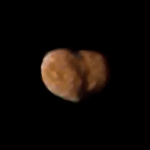
NASA / JPL / Ted Stryk
Amalthea in color
Galileo took this three-color image of Jupiter's little moon Amalthea on November 5, 1996, during its third orbit of Jupiter. Galileo was 876,000 kilometers away, viewing Amalthea at a phase angle of 31°. Amalthea is highly elongated, 270 by 166 by 150 kilometers in size. It is unusually red in color; the red probably results from sulfur compounds that came from Io.Support our core enterprises
Your support powers our mission to explore worlds, find life, and defend Earth. You make all the difference when you make a gift. Give today!
Donate

 Explore Worlds
Explore Worlds Find Life
Find Life Defend Earth
Defend Earth


